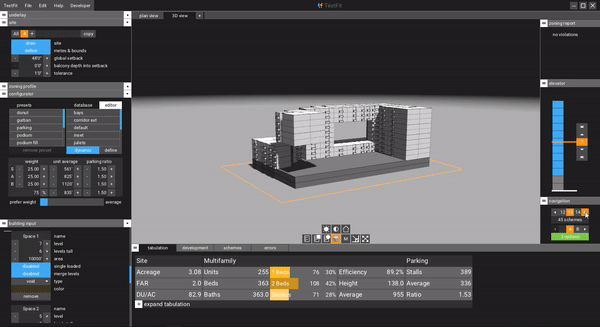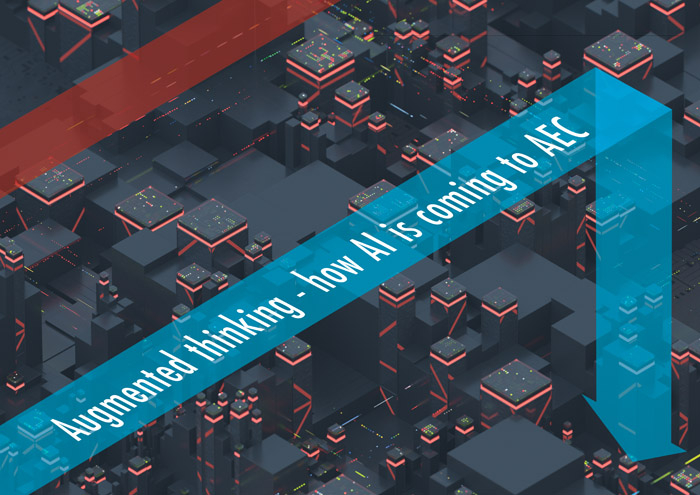We explore some of the emerging AEC focused software tools that are harnessing the power of Artificial Intelligence (AI)
Artificial Intelligence (AI) is coming to all aspects of the AEC industry. At the moment many are early start-ups but there is quite a range of new products and services using AI to enhance AEC workflows.. While a few mentioned here are still in open beta testing, many are commercially available. Here is the AEC Magazine guide to the emerging developers
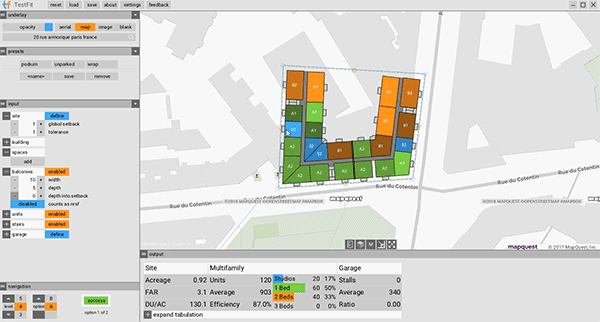
TestFit offers AI-enhanced site feasibility study and building configuration. The target market is architects, developers, and general contractors.
Models generated by the software can be tweaked in real-time using generative design technology for instant review of options. The user can specify a wide variety of parameters to guide option generation. A set of configuration utilities can spatially layout units, stairs, amenity spaces, elevators, corridors, and balconies. A parking configurator solves stalls, drive aisles and ramps. Monthly subscription start at $375. ■ testfit.io
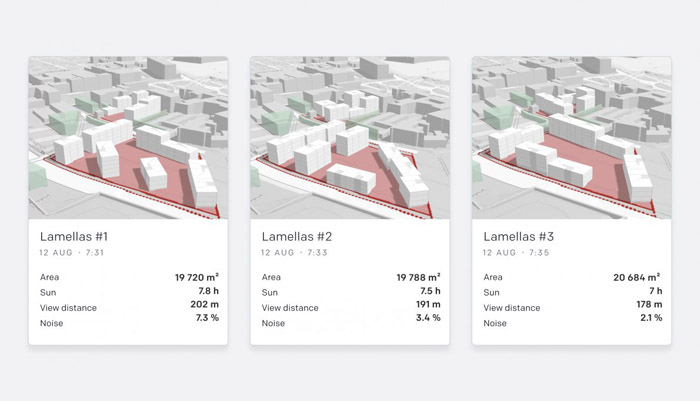
Spacemaker provides a breakdown of each proposed project, allowing teams to explore multiple options in-depth. It is designed for collaborative workflow among architects, engineers, real estate builders, urban planners, and local authorities.
The software lets architects and developers weight various parameters, such as natural light, noise regulations, and the number of rooms a plot can fit.
The software uses machine learning to add user choice to its knowledge base, gaining additional expertise with use. Named customers include Skanska, Obos, AF Gruppen, and NREP. The platform is available on monthly subscription. ■ spacemaker.ai
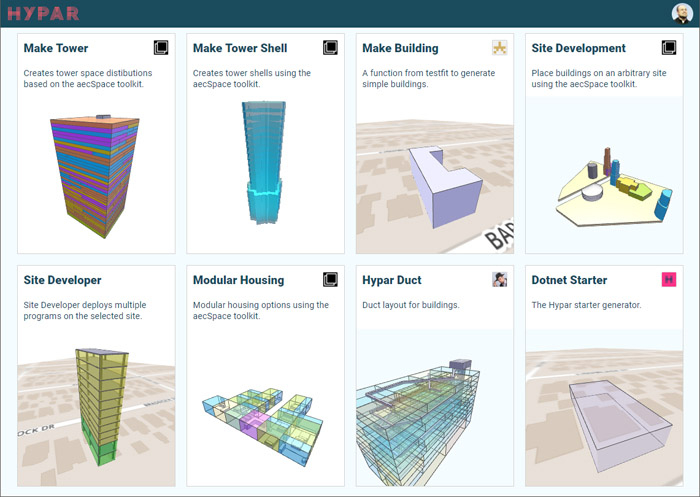
Being in the browser, allows Hypar Explore to bypass uploading of heavy BIM data sets by reviewing content and uploading results from user inquires. The service supports IFC standards, allowing it to be BIM platform independent. A designer can provide a set of requirements and ask for ten options, for example, to be generated from the data.
Currently users execute Python or C++ scripts to interact with BIM data; the company is working on more user-friendly interaction.
The developers, led by two Autodesk AEC alumni, Ian Keough and Anthony Hauck, are aiming for Hypar Explore to become an open platform where users buy and sell custom scripts and data. Hypar Explore currently works in free preview mode. ■ hypar.io
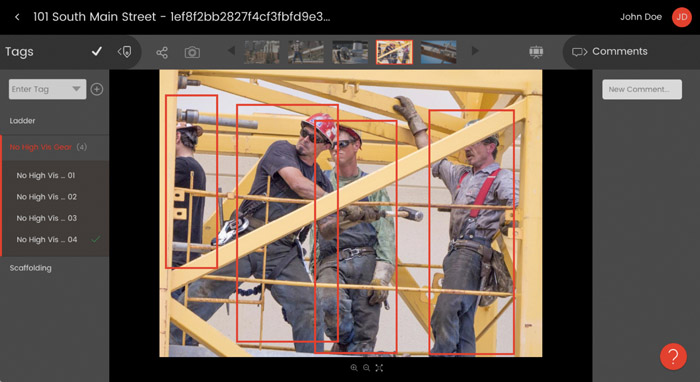
The software includes a Safety Suite for observation, safety monitoring, and predictive analysis.
The AI engine, named Vinnie, is trained to recognise construction risks in photos and other project data. The observation utility offers risk scoring and workflow analysis, while the predictive analysis solution creates prioritised project rankings.
The company claims its predictive-based approach to construction site monitoring has led to safety incident rate reductions of up to 30%.
Named customers include Barton Malow, Shawmut, AECOM, Suffolk, and Skanska. Pricing is by inquiry. ■ smartvid.io

OpenSpace offers AI-powered photo site documentation, automatically mapped to plans. The company says its proprietary Vision Engine platform is the first “fully automated reality capture system, enabling builders and owners to capture 360 video and photos without any manual input and in a fraction of the time of traditional tools.”
The software allows real-time data gathering that assembles reports in a few minutes. The software uses the $800 Garmin VIRB 360 camera, which builders or site managers strap to their hardhat to document site development. The software then uploads the data to a cloud service, where photos are organised, stitched and mapped to project plans automatically. Objects including windows and moulding are automatically identified.
Named users include Beck Group, DPR Construction, Hathaway Dinwiddie, NOVO, and Suffolk. Contact the developer for pricing. ■ openspace.ai
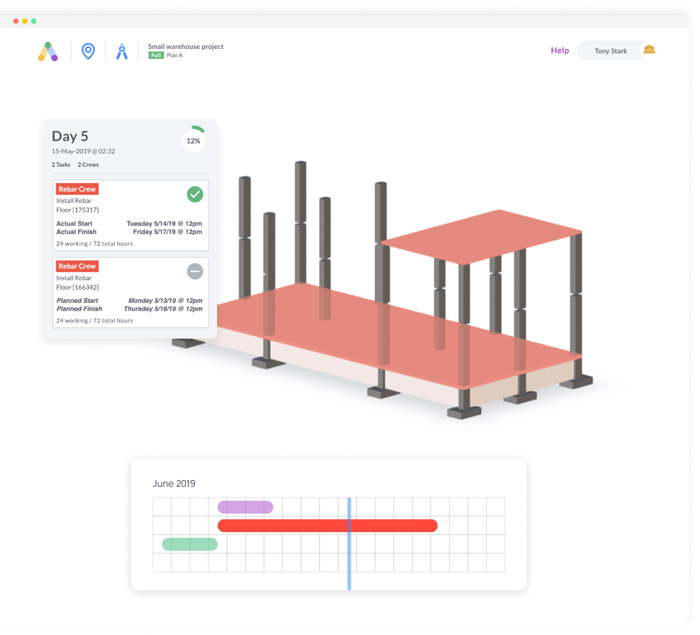
Alice Technologies is an AI-based construction scheduling and management platform. It collects data including crew size, expected quantity of cranes and other heavy equipment, materials, design models, and production rates. The software then runs millions of simulations to arrive at schedules for user review, modification, and bidding.
The company claims the result is shorter projects, lower operating costs, and increased site safety. As the user adjusts a suggested simulation, all changes ripple through the plan to provide a real-time update of cost and time. The selected simulation automatically generates a full 4D cost-loaded schedule for tracking and visualisation. Alice can also be used once the project is underway to find alternatives if changes or problems occur.
The AI algorithm in Alice has been trained by mapping out the relationship between building sequence and schedule, by analysing thousands of existing projects. Named users include Hawaiian Dredging Construction Co, AF Gruppen, and Parsons. ■ alicetechnologies.com
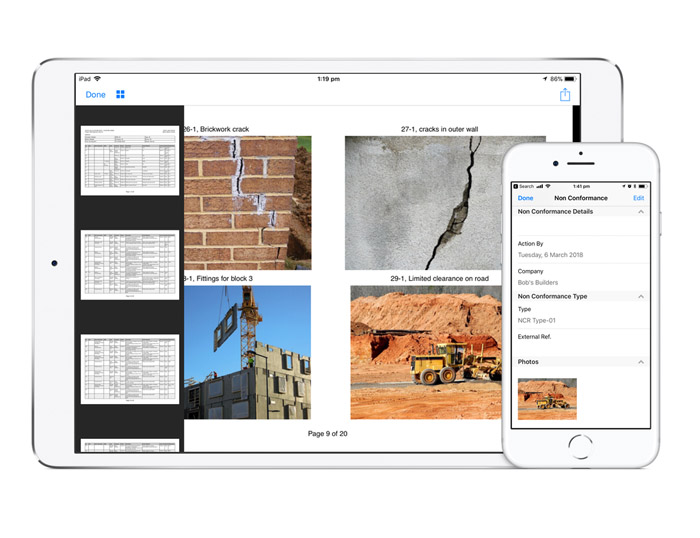
APE Mobile is a mobile app (iOS, Android, Windows) for capturing field data and generating real-time updates. It offers checklists, daily logs, and automates paperwork to deliver PDF reports that conform to a company’s existing workflow.
Site assistance technology uses AI to explore existing databases and to understand natural language enquiries. Users can make queries like “Show all inspections for Phase 3” or “How much concrete was poured today?” Data reports can be exported to more than 800 existing construction management solutions or to popular cloud storage and data sharing sites.
Named users include DM Civil, TCD, GSE Engineering, Croker Construction, Kypreos Group, and COLAS WA. The product is available on monthly subscription. ■ apemobile.com
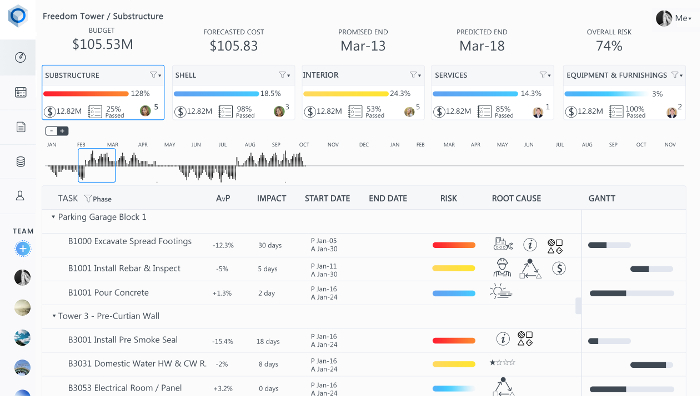
Kwant.ai uses proprietary, wearable low-power sensors to automate construction site data collection. The tech combines sensor data with data from mobile devices, and processes the results in real-time on a cloud-based analytics platform.
The platform prepares actionable analytics including workforce location, schedule and cost risk issues, and can issue early warnings to predict and prevent safety incidents. Reports include a heat map showing employee location.
Kwant says it has analysed thousands of project schedules using AI as a foundation for the standardisation of all the unstructured site data into meaningful “buckets.”
The software works with Procore construction management software. The company claims it has validated data showing 11% productivity increase and 80% reduction of safety incidents by its current users. Named customers include Walsh Brothers, OHL Judlau, Malbro Construction, Vorea, Hollister Construction Services, Magil Construction, and Paric Corporation. Pricing direct from Kwant. ■ kwant.ai
Intsite uses AI to optimise and automate the use of heavy equipment for construction, mining, and container ports. The stated goal is to “transform heavy machinery into smart and autonomous robots quickly and cost effectively.”
The technology started as a guidance system and smart dashboard for construction cranes. The system combines computer vision, deep learning, and AI algorithms originally developed for aerospace with off-the-shelf cameras and other sensors. All Intsite machines are linked globally via the cloud, creating a network of machines each learning from the other.
Intsite has two products: ForeSite combines ADAS safety technology with AI to optimise movement, guiding operators to the most efficient trajectories and providing safety alerts; AutoSite builds on the knowledge gained by ForeSite to extend guidance into autonomous decisions and actions. Named users include Infralab and Shikun & Binui Solel Boneh. Pricing is quoted on an individual basis. ■ intsite.ai
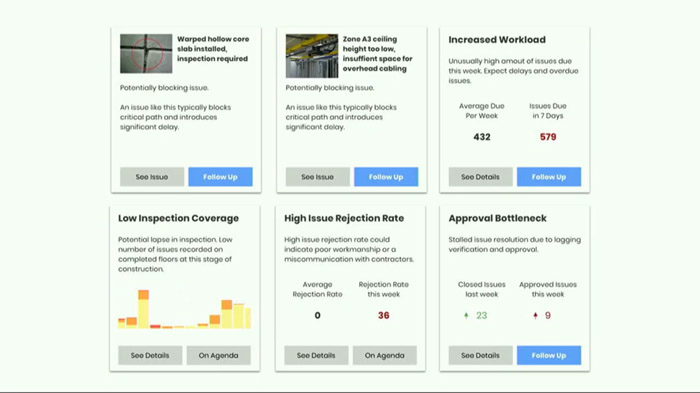
Nucon is building its software by applying machine learning to selected construction industry models. It then applies context-aware image analysis, speech recognition, dynamic translation, and voice input similar to what is available from Apple Siri or Amazon Alexa.
The company says Nucon technology will be useful for defect resolution, prediction and discovery of high-risk issues, and identification of workflow lapses that may snowball.
The product is still under development; a beta version is available. ■ nucon.io
AI Construct is an early-stage venture working on the integration of robotics into a 5D BIM planned environment. The company is looking towards a time when on-site deployment of robotic equipment becomes commonplace. Using 5D models (BIM plus time and money), the software is aimed to guide companies with big data to achieve workflow and safety improvements.
The company will use AI to create virtual project builds, to identify potential problem areas and assist in finding solutions. Data collected from from robots, sensors, and cameras will aid autonomous activities and be used for real-time reporting. ■ ai-construct.co.uk.
Learn more about AI in AEC
This story is part of a longer article about Artificial Intelligence in the AEC sector.
If you enjoyed this article, subscribe to our email newsletter or print / PDF magazine for FREE

